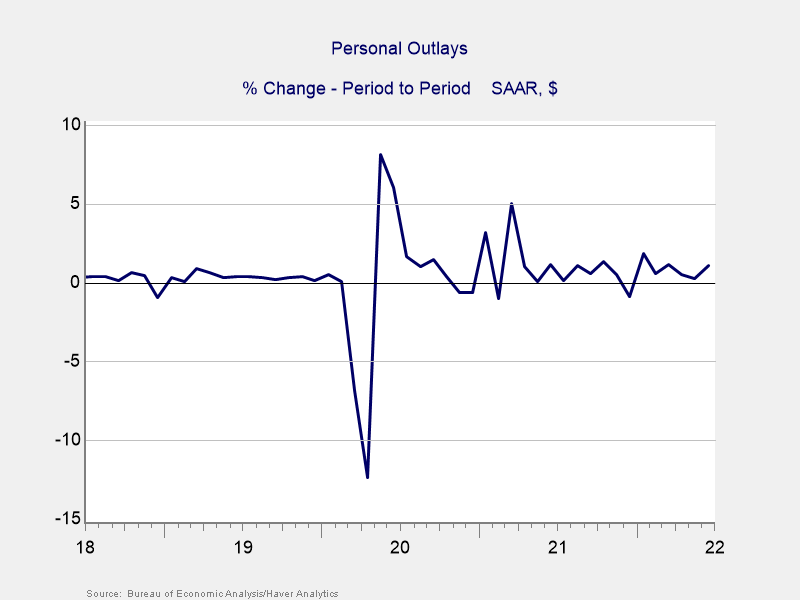Markets Rebound in July
July was a strong start to the second half of the year for markets, with all three major U.S. indices experiencing gains: the S&P 500, Dow Jones Industrial Average (DJIA), and Nasdaq Composite rose 9.22 percent, 6.82 percent, and 12.39 percent, respectively. Although all three indices are still in red for the year, these results helped offset second quarter losses.
Fundamentals showed signs of positive progress. Per Bloomberg Intelligence, as of July 29, 2022, with 56 percent of companies having reported actual earnings, the blended earnings growth rate for the S&P 500 in the second quarter was 6.6 percent (up from analyst estimates for a more modest 4.1 percent).
While fundamental factors were supportive, technical factors were not. All three indices spent the entire month well below their respective 200-day moving averages—for the fourth consecutive month below trend—and the rebound in July was not enough to offset weakness from earlier in the year.
The MSCI EAFE Index increased 4.98 percent in July with developed international markets experiencing a similar rebound. The MSCI Emerging Markets Index dropped 0.16 percent as concerns about slowing growth in China and other emerging market economies weighed on investor sentiment. Technical factors continued to serve as a headwind for international equities in July.
Fixed income markets saw notable rebounds in July, driven by falling long-term interest rates. The 10 year U.S. Treasury yield dropped from 2.98 percent in June to 2.67 percent in July. This brought long-term interest rates to their lowest level in three months, which helped support equity and fixed income markets. The Bloomberg U.S. Aggregate Bond Index gained 2.44 percent.
High-yield fixed income markets showed signs of improvement in July. The Bloomberg U.S. Corporate High Yield Index gained 5.90 percent. High-yield credit spreads declined from 5.92 percent at the start of the month to 4.83 percent by month-end, signaling less investor concern surrounding credit risk.
Slowing Growth and Recession Concerns
Economic data releases in July largely pointed toward slowing growth. The release of the advance estimate for second quarter gross domestic product (GDP) growth marked two consecutive quarters with declining growth, which led to increased investor concern of a potential recession.
While two negative quarters of GDP growth figures generated headlines, a formal recession is more complicated; by that definition, we’re not currently in a recession. Outcomes were largely driven by technical adjustments caused by the aftermath of the Covid-19 pandemic. Traditional drivers of economic growth, such as job creation and personal consumption, remained solid during the first half of the year.
The June job report showed that 372,000 jobs were added, which is well above economist estimates and very strong on a historical basis. The unemployment rate remained unchanged at 3.6 percent, which tied the post-pandemic low and signals high levels of overall employment throughout the economy.
Consumer spending also showed signs of growth. Retail sales rebounded in June, echoed by June’s personal income and spending reports. As you can see in Figure 1, this marks six consecutive months with personal spending growth following a temporary lull in spending at the end of last year.
Figure 1. Personal Spending Growth, July 2018–Present

Consumer spending growth in June and the first half of the year was notable. High inflation, rising gas prices, and market selloffs contributed to the drop in confidence to start the year. But gas prices are down compared to the peak in mid-June, and there are signs that inflation may be peaking from the Federal Reserve (Fed)’s attempts to slow the economy.
Business spending also showed positive signs with better-than-expected headline and core durable goods orders growth. While business spending growth has slowed compared to last year, business spending remains solid and indicates business owners are continuing to invest to meet levels of demand.
Growth Expected Despite Market Risks
July was a positive month for markets, as returns helped offset losses from early 2022. Better-than-expected second quarter earnings results are an encouraging sign for businesses in the first half of the year. Economic releases showed that economic fundamentals are strong.
Domestically, the major concern is still inflation, which could lead to further market turbulence if inflationary pressure remains stubbornly high. While medical risks have declined, we could still face another wave of Covid-19 infections.
Looking abroad, slowing global growth and political uncertainty remain a potential cause for concern for U.S. investors. The ongoing war in Ukraine could expand and lead to further instability if fighting intensifies, which might prompt unexpected market volatility. There are also concerns about China’s zero-Covid-19 policies and the potential impact on global trade.
Despite risks to both the economy and the markets, the most likely path forward is growth—albeit slower growth than we’ve seen since reopening efforts began in earnest last year. We’re likely to experience setbacks and turbulence, but economic fundamentals should help support long-term growth. Given the potential uncertainty in the short term, a well-diversified portfolio that matches investor goals and timelines remains the best path forward for most. As always, please reach out to us to discuss your current plan if you have concerns.
All information according to Bloomberg, unless stated otherwise.
Disclosure: Certain sections of this commentary contain forward-looking statements based on our reasonable expectations, estimates, projections, and assumptions. Forward-looking statements are not guarantees of future performance and involve certain risks and uncertainties, which are difficult to predict. Past performance is not indicative of future results. Diversification does not assure a profit or protect against loss in declining markets. All indices are unmanaged and investors cannot invest directly into an index. The Dow Jones Industrial Average is a price-weighted average of 30 actively traded blue-chip stocks. The S&P 500 Index is a broad-based measurement of changes in stock market conditions based on the average performance of 500 widely held common stocks. The Nasdaq Composite Index measures the performance of all issues listed in the Nasdaq Stock Market, except for rights, warrants, units, and convertible debentures. The MSCI EAFE Index is a float-adjusted market capitalization index designed to measure developed market equity performance, excluding the U.S. and Canada. The MSCI Emerging Markets Index is a market capitalization-weighted index composed of companies representative of the market structure of 26 emerging market countries in Europe, Latin America, and the Pacific Basin. It excludes closed markets and those shares in otherwise free markets that are not purchasable by foreigners. The Bloomberg Aggregate Bond Index is an unmanaged market value-weighted index representing securities that are SEC-registered, taxable, and dollar-denominated. It covers the U.S. investment-grade fixed-rate bond market, with index components for a combination of the Bloomberg government and corporate securities, mortgage-backed pass-through securities, and asset-backed securities. The Bloomberg U.S. Corporate High Yield Index covers the USD-denominated, non-investment-grade, fixed-rate, taxable corporate bond market. Securities are classified as high-yield if the middle rating of Moody’s, Fitch, and S&P is Ba1/BB+/BB+ or below. Authored by Brad McMillan, CFA®, CAIA, MAI, managing principal, chief investment officer, and Sam Millette, manager, fixed income, at Commonwealth Financial Network®. © 2022 Commonwealth Financial Network®





